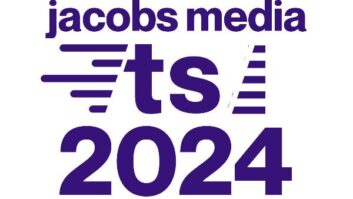“No, really. How do you cue up a record?” the operations manager asked.
I thought he was joking; then I remembered I was talking with someone under 30. I tried to explain the process in detail, and I think he understood it; but I suspect this was akin to discussing childbirth with someone who hasn’t had a baby. Logically they get it; yet emotionally it doesn’t strike the same chord.
Ever since this interaction, I began to pay more attention to my young friend’s work habits, questions and line of thinking.
Why? I realized he’s got less baggage about the way radio should be today than I do.
I’m a pre-consolidation guy, like many readers, I suspect. Yes, I have embraced consolidation; yet it’s been a process for me, and I often have to question my bias about the past vs. the present.
Half-full glass
Let’s spend a few moments examining the way things are and the tremendous opportunities we have with clusters that we did not have prior to 1996.
I’m hoping you’re employed in radio. If so, you are relatively new, like my young friend, or a survivor who has adapted — and likely grown — in the business.
If you are not working, I’m sorry; many great people have left the building. Our workforce in radio has shrunk in a fairly predictable way. It happens in every industry that goes through consolidation.
So what’s the positive news here?
We don’t stop to think about it; but most employees now have more responsibility. PDs, marketing directors, promotion directors, sales managers, engineers, traffic managers, jocks and webmasters often work with multiple stations. Those in the biz for a long time sometimes complain about this; many younger people love it because they get to wear more than one hat and exercise more creativity.
Marketing/promotion for a cluster primarily is about two things: How to allocate limited financial resources; and understanding that brands are for listeners, not for us.
It’s fairly common practice for companies to spend as much marketing money for an entire cluster than what old-line companies might spend on one or two stations — and this doesn’t even take into account that TV ads, direct mail, outdoor and the like are much more expensive than they were eight years ago.
We have to be smart about which stations are selected to receive outside media. It’s a huge mistake to treat a cluster of stations as a “family” in which treatment is always equal. Instead, we must focus our resources where they are most needed. If that means individual stations in a cluster feel ignored, so be it. Spreading an already meager budget will, in the end, deliver poor results.
As for the branding issue, I’m referring to a matter that is easily confused. Our listeners still know us by our individual station identity or brand. They may have heard of our parent company but are unlikely to think of us that way unless their recall is aided.
Newer programming promotion and marketing people sometimes will use a parent company name on-air, in promos, in print ads, on banners — you name it — and add the station brand; this may be a dictate from the parent company. But the practice confuses what should be a simple proposition: trying to get someone to recall your station brand (name) and write it down in diary.
Focus the benefit
Another common error is to believe we can transfer feelings about one brand to another simply by associating the brands on-air or through outside marketing.
For example, too many clusters will include several stations in an event just because they can. Instead of one station brand that owns the event, you’ll see five logos on the banners and newspaper ads, and five stations on-site for the event. This leaves the impression that a lot of radio stations were involved; but the consumer may well not recall which ones.
The positive news is that you can use the power of a cluster to get behind an event by using non-branded promotion on all but one station, which then “owns” that specific event.
Young eyes may see other cluster advantages, including better pay because of multiple responsibilities; the ability to be on the air in several markets without leaving home; better promotional toys, because they can be shared among stations; and a greater brain trust to pull together strategy and tactics.
Now if you’ll excuse me, I have to go see if I can find that turntable in my attic so I can demonstrate the ancient art of cueing up a record to a new friend.











